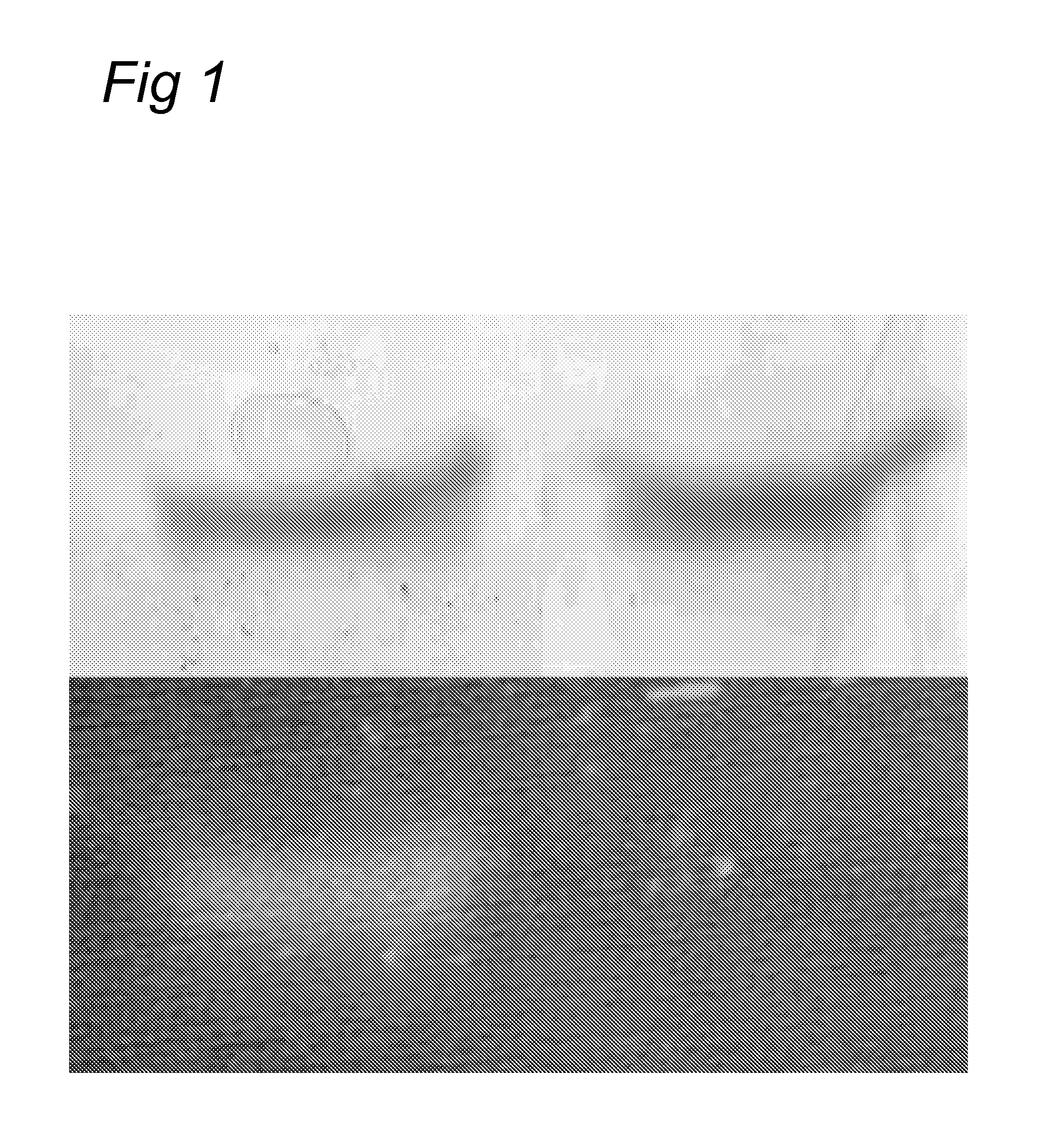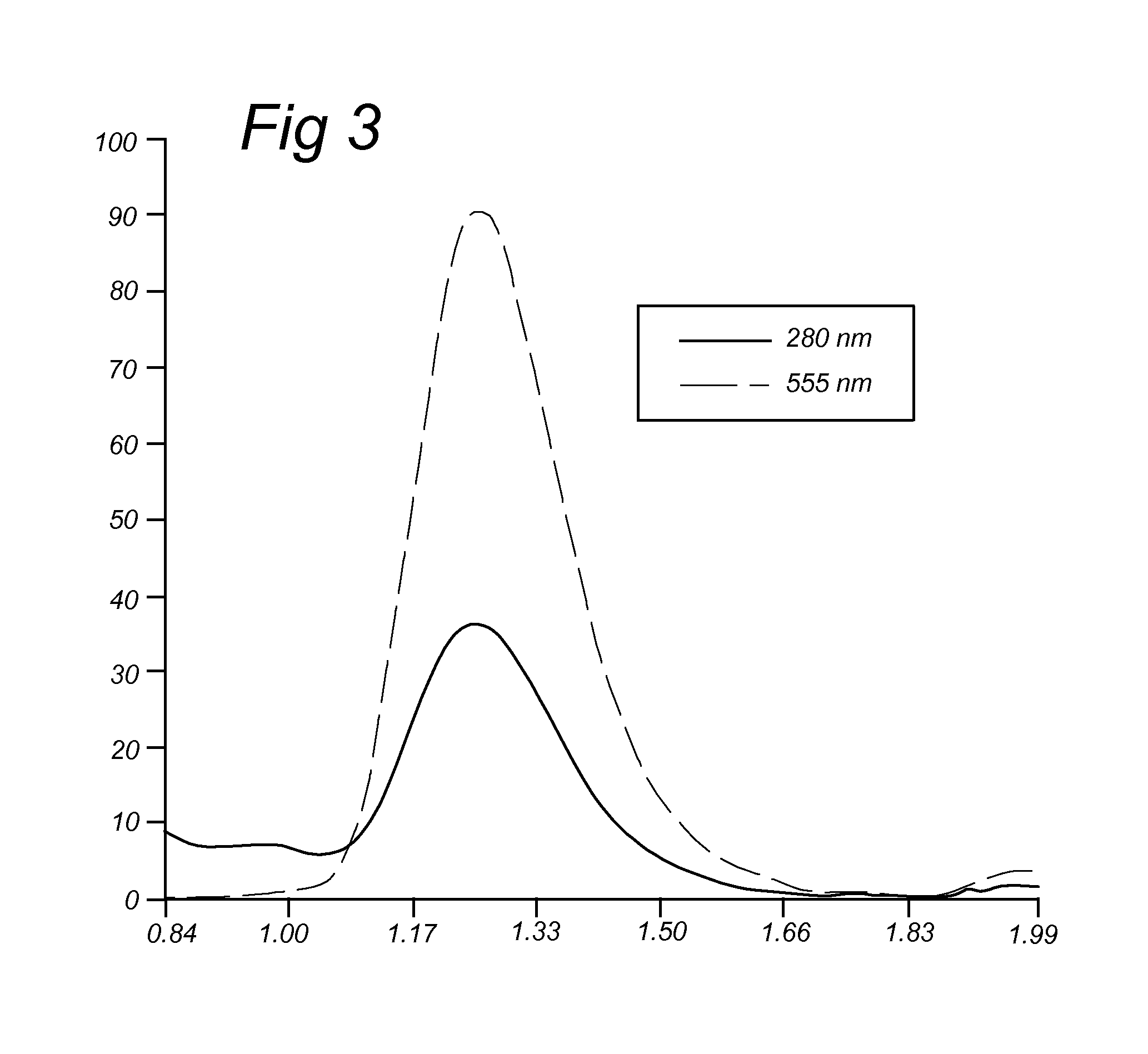Fused cyclooctyne compounds and their use in metal-free click reactions
a technology of cyclooctyne compounds and click reactions, which is applied in the preparation of halogen introduction, ester active ingredients, peptides, etc., can solve the problems of inability to apply reactions in vitro, the vast majority of such reactions can only be performed under strictly anhydrous conditions, and the cyclooctyne probes for bioorthogonal labeling known in the prior art suffer
- Summary
- Abstract
- Description
- Claims
- Application Information
AI Technical Summary
Benefits of technology
Problems solved by technology
Method used
Image
Examples
example 1
Synthesis of exo- and endo-IIa.2
[0167]
[0168]In the first step, ethyl diazoacetate was slowly added to a solution in dichloromethane of a large excess (8 equiv.) of 1,5-cyclooctadiene in the presence of rhodium acetate, leading to the diastereomeric compounds exo-IIa.1 and endo-IIa.1 in a ratio of 2:1 (combined yield of 82%). After straightforward separation by silica gel, first the endo-isomer of IIa.1 was converted into alcohol IIa.2 following a straightforward three-step procedure of reduction, bromination and elimination. Thus, ester reduction of endo-IIa.1 with LiAlH4 (30 min) gave a crude intermediate alcohol (30 min) that was pure enough for bromination without intermediate purification (30 min). It must be noted that temporary protection of the alcohol, as in the synthesis of DIBO, is not required. Finally, the resulting dibromide was subjected to excess KO / Bu in THF (0° C.→reflux, 2 h), affording the desired 9-(hydroxymethyl)-bicyclo[6.1.0]non-4-yne endo-IIa.2 in 61% isolate...
example 2
Reaction Kinetics
[0169]The reaction kinetics for cycloaddition with the prototypical azide benzyl azide were investigated. Thus, compound endo-IIa.2 was dissolved in a 3:1 mixture of CD3CN and D2O and mixed with benzyl azide at a final concentration of 18 mM. Chemical conversion was followed with proton NMR by integration of diagnostic peaks and indicated that endo-IIa.2 reacted rapidly and cleanly to the expected triazole adducts. Calculation of second-order reaction kinetics showed a rate constant of 0.12 similar value of 0.10 M−1s−1 was determined for exo-IIa.2, indicating that the stereochemistry at the C-9 position has little influence on reactivity, with only a slightly higher rate for the endo-configured compounds. A significant solvent effect was noticed because the same cycloaddition reaction in a 1:2 mixture of CD3CN and D2O gave rate constants of 0.28 and 0.25 M−1s−1 for endo-IIa.2 and exo-IIa.2, respectively.
example 3
Bicyclo[6.1.0]non-4-yne (BCN) Conjugates
[0170]
DCN Conjugated to biotin (IIa.4)
[0171]The alcohol moiety of endo-IIa.1 was converted into a p-nitrophenyl (pNP) carbonate as in IIa.3. Subsequent reaction with biotin-(POE)3-NH2 led to BCN-biotin conjugate IIa.4 (69% yield).
BCN Conjugated to Alexa Fluor 555 (IIa.6)
[0172]Alternatively, compound IIa.3 was reacted with 1,8-diamino-3,6-dioxaoctane to give amino-terminated BCN-probe IIa.5, that was converted into the fluorophore conjugate IIa.6 upon reaction with commercial Alexa Fluor 555 hydroxysuccinimide ester.
[0173]Alternatively, compound IIa.3 was reacted with 1,5-diaminopentane to give a more lipophilic amino-terminated BCN-probe.
PUM
| Property | Measurement | Unit |
|---|---|---|
| concentration | aaaaa | aaaaa |
| pH | aaaaa | aaaaa |
| volume | aaaaa | aaaaa |
Abstract
Description
Claims
Application Information
 Login to View More
Login to View More - R&D
- Intellectual Property
- Life Sciences
- Materials
- Tech Scout
- Unparalleled Data Quality
- Higher Quality Content
- 60% Fewer Hallucinations
Browse by: Latest US Patents, China's latest patents, Technical Efficacy Thesaurus, Application Domain, Technology Topic, Popular Technical Reports.
© 2025 PatSnap. All rights reserved.Legal|Privacy policy|Modern Slavery Act Transparency Statement|Sitemap|About US| Contact US: help@patsnap.com



